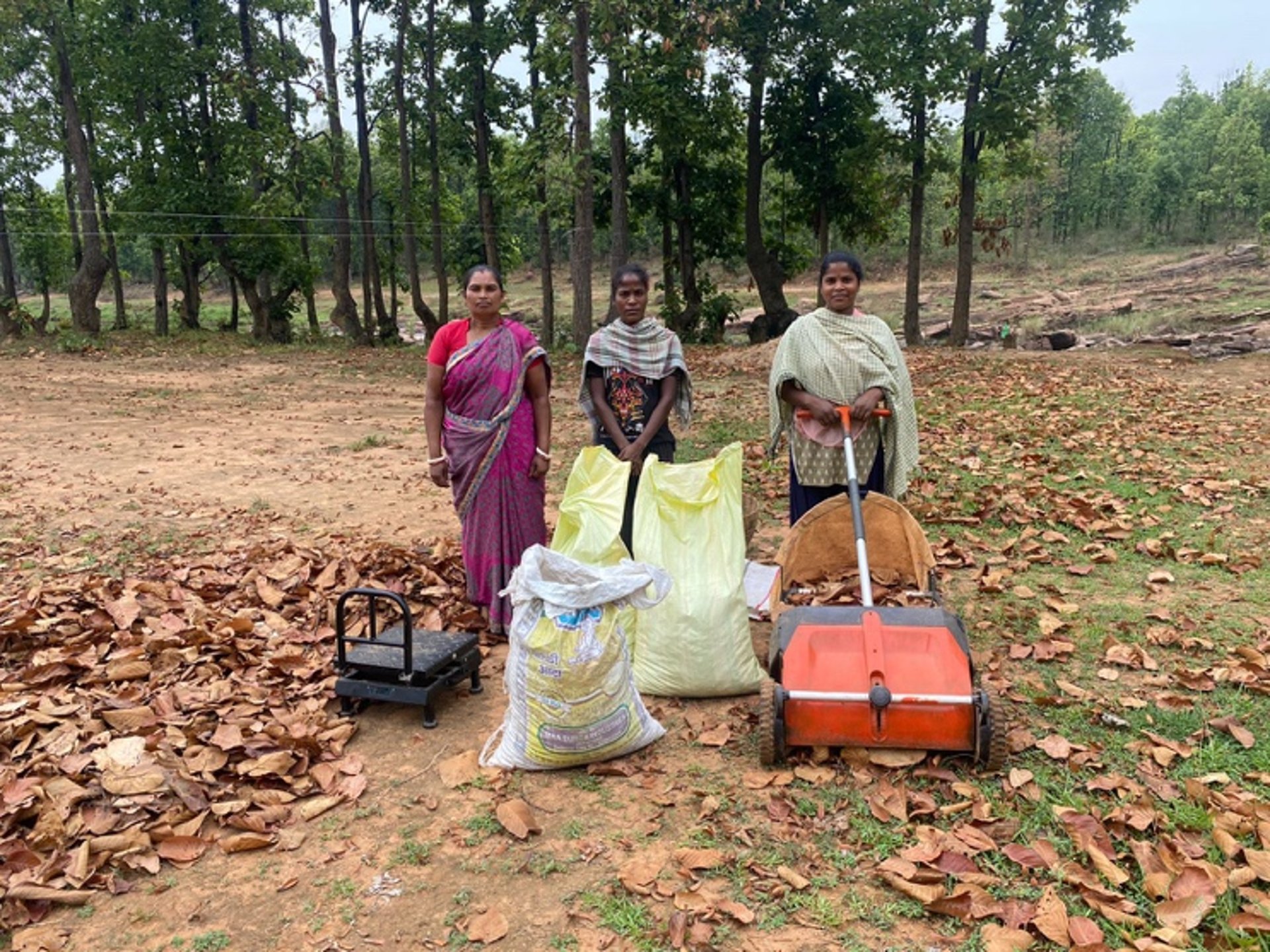
20.08.24
Reimagining Sal Seed Collection: Empowering Forest-Dependent Communities Through Innovation
The physical burden of this work is significant. Each woman collects 15–20 kg of seeds daily, carrying heavy loads over long distances—sometimes up to 10 km—to reach their homes or the market. Once collected, the seeds must be dried, de-winged, and sold. However, with limited storage facilities and poor market access, many women are forced to sell immediately at low prices, often dictated by middlemen. These low returns make sal seed collection an unreliable source of income, despite its considerable economic potential.


Sal seed collection is a key economic activity in Jharkhand, Chhattisgarh, Odisha, and Madhya Pradesh, where sal trees dominate the landscape. Jharkhand alone has over 2.5 million hectares of sal forests, yet only 10–15% of the available seeds are harvested each year. The collection season lasts just six weeks—from May to early July—before the monsoon intensifies. Women from forest-dependent communities play a central role in this process, often spending 6–8 hours daily manually collecting seeds from the forest floor.
Introducing the Sal Seed Collector Machine
To address these challenges, the Initiative on the Forest Economy (IoFE) has developed and tested a sal seed-collector machine in the districts of Gumla, Simdega, and Ranchi of Jharkhand. Designed to reduce the time and labour involved in collection, this manually operated device features a pinion-and-gear-wheel system, which allows it to sweep up fallen seeds into an attached bag as it moves across the forest floor.
Initial field tests revealed that the machine allows collectors to gather over 5.5 kg of seeds in just one hour, marking a 33% increase in collection efficiency compared with manual methods. This reduction in labour enables women to double their daily collection, substantially increasing their earnings. Additionally, the machine allows for faster seed aggregation before the onset of rainfall, reducing post-harvest losses from moisture damage.
Despite its advantages, early trials revealed certain limitations. The current model also picks up dry leaves and twigs, requiring additional effort for segregation. It performs less effectively on hilly terrain, thereby necessitating manual collection. Based on feedback from collectors, we are working on several design improvements, including:
a refined separation mechanism to filter out unwanted debris;
stronger wheels and improved balance to enhance manoeuvrability on uneven surfaces; and
a solar-powered suction system to increase efficiency and reduce further manual effort.
These modifications will help create a user-friendly, scalable solution readily adoptable across diverse forest regions.
Beyond Mechanization: Strengthening Market Linkages
Mechanisation alone cannot fully address the challenges faced by sal seed collectors. While improving efficiency at the collection stage is important, it is equally critical to ensure that collectors receive fair compensation for their efforts. To this end, we are working to establish direct market linkages with institutional buyers, thereby minimising middlemen’s costs and maximising value for the collectors.
Through pilot aggregation efforts, three women-led community enterprises recently sold 11 metric tonnes of sal seeds to AAK India Private Limited (AAKIPL)—an institutional buyer—at prices higher than those collectors typically receive in local markets. Scaling up such structured sales can significantly improve collectors’ earnings, making sal seed collection a sustainable livelihood option.
Refining the Machine for Greater Efficiency
Transforming the Forest Economy Through Innovation
The introduction of the sal seed-collector machine, combined with organised market access, marks a fundamental shift in how forest-based livelihoods are structured in India. With over 1.5 million forest-dependent households in Jharkhand alone, scaling these innovations will have far-reaching economic and social impacts. By reducing drudgery, increasing earnings, and formalising market channels, we are working to unlock the full potential of sal seed collection—ensuring forest-dependent communities benefit more equitably from the resources they sustain.
